About This Post
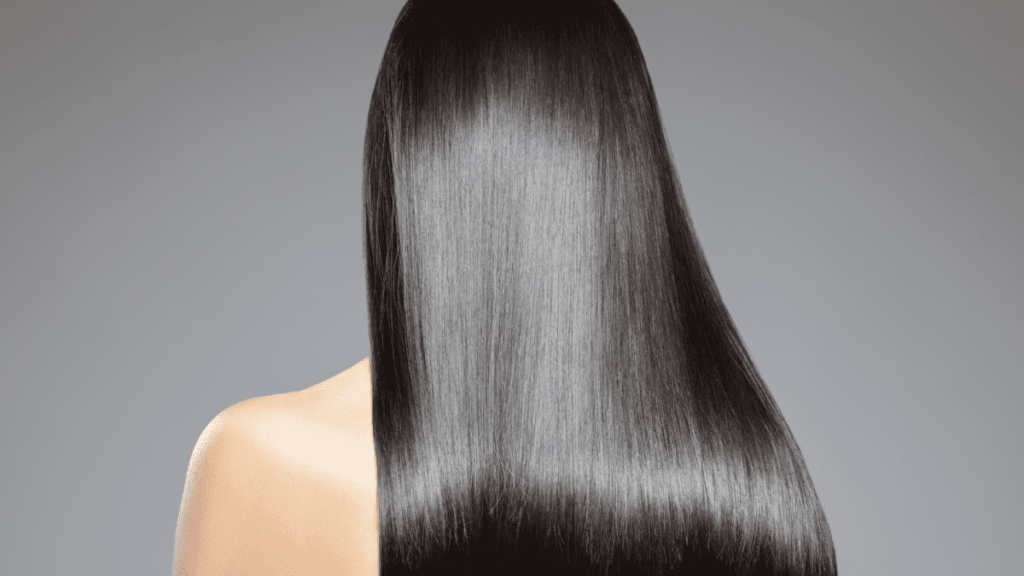
When Your Edges Become Your Biggest Hair Worry
You know that moment when you’re getting ready in the morning, and you catch a glimpse of your hairline in the mirror… and your heart just sinks a little? Those edges that used to frame your face so beautifully are looking sparse, thin, maybe even completely gone in some spots.
If you’re nodding right now, feeling that familiar pang of frustration mixed with embarrassment, I want you to know something: you’re not alone. And more importantly, you’re not stuck with this.
Here in Cape Town, thinning edges have become an epidemic that nobody really talks about openly. We’ll discuss load shedding, water shortages, and traffic on the N1, but mention struggling with edge loss and suddenly everyone gets quiet. Yet walk through any mall, salon, or workplace in the Mother City, and you’ll see countless people dealing with this exact same issue.
The worst part? It feels like every solution costs a fortune. Premium hair growth treatments, expensive salon visits, imported oils that cost more than your grocery budget… it’s enough to make you want to give up entirely.
But here’s what I’ve learned after years of helping Cape Town residents rebuild their edges: you don’t need to spend hundreds of rands to see real results. The best affordable hair growth oils for thinning edges are accessible, effective, and designed to work with our local conditions—not against them.
The challenge isn’t finding expensive miracle cures. It’s knowing which affordable options actually work, how to use them properly, and having realistic expectations about what’s possible. Because here’s the truth that the beauty industry doesn’t want you to know: consistent care with the right affordable products often outperforms sporadic use of expensive treatments.
Your edges didn’t disappear overnight, and they won’t come back overnight either. But with the right approach—one that doesn’t break the bank—you can start seeing improvements within weeks and real transformation within months.
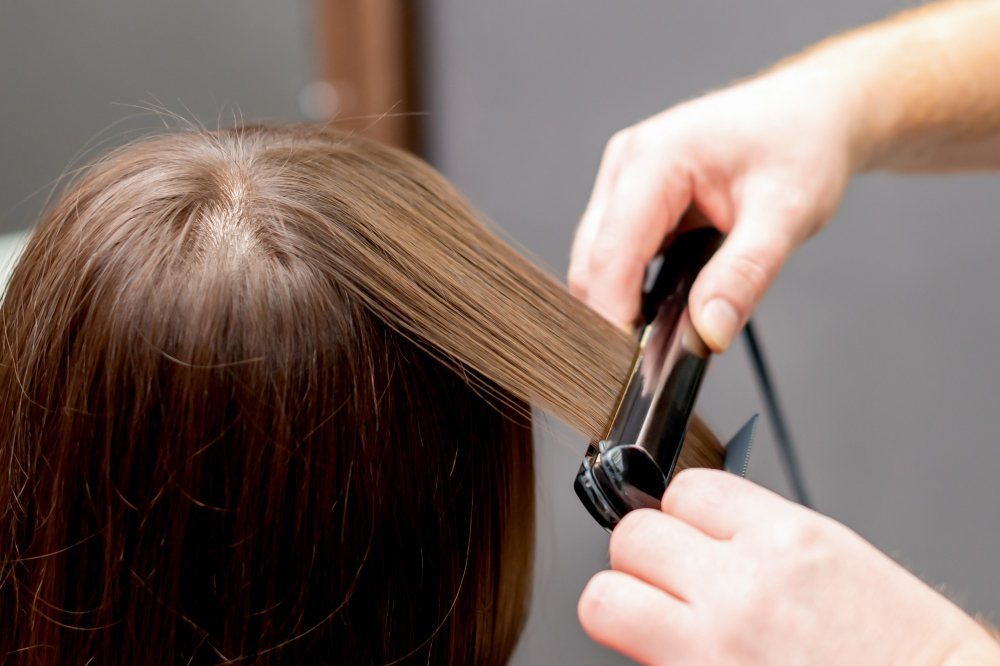
Why Edges Thin Out (And Why It’s More Common in Cape Town Than You Think)
Let’s talk about what’s really happening to your edges, because understanding the why helps you tackle the problem more effectively. And honestly? Some of this might surprise you.
Edge thinning isn’t just about genetics or bad hair practices (though those play a role). Living in Cape Town creates some unique challenges that many people don’t even realize are affecting their hairline daily.
Our wind… oh my word, the wind. That constant Cape Town breeze that we love for cooling us down? It’s constantly pulling at your edges, creating micro-damage day after day. Add in our intense UV exposure—some of the highest in the world—and your hairline is basically under attack every time you step outside.
Then there’s the stress factor that’s particularly relevant here. Let’s be real: living in Cape Town comes with unique stressors. Power outages that mess with our routines, water restrictions that change how we wash our hair, economic pressures that many families face… chronic stress literally affects hair growth at the follicle level.
The way we style our hair to cope with our climate doesn’t help either. Tight ponytails to deal with wind, heavy gels and edge control products to maintain styles in humidity, frequent washing due to dust and sweat—all of this creates tension and chemical stress right where your edges are most vulnerable.
Age plays a role too, and this is where it gets interesting for many Cape Town women. Hormonal changes during perimenopause and menopause (which can start earlier than people expect) directly impact hair growth patterns. The hairline is often the first area affected because the follicles there are naturally finer and more sensitive to hormonal fluctuations.
Chemical relaxers, while less common now, have left lasting effects for many women who used them for years. The delicate edge area often bears the brunt of chemical damage, and recovery can take time even after switching to gentler hair practices.
But here’s what gives me hope: unlike genetic hair loss patterns that affect the crown and top of the head, edge thinning often responds beautifully to targeted care. Those follicles are usually just dormant or damaged, not dead. With the right stimulation and nourishment, many people see significant improvement.
This is exactly why finding the right hair growth oil for your edges isn’t just about vanity—it’s about giving your hairline the specific support it needs to recover from our unique environmental and lifestyle challenges.
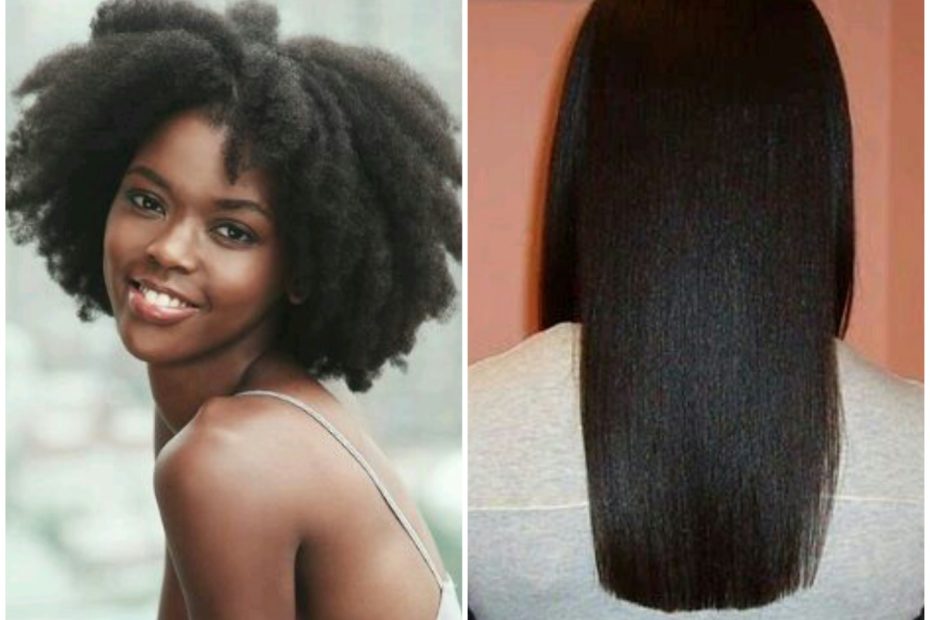
The Real Cost of Ignoring Thinning Edges
I need to be honest with you about something that goes way deeper than just appearance—because thinning edges affect your confidence, your daily routines, and even your wallet in ways you might not have considered.
Let’s start with the emotional cost, because this is real and it matters. When your edges start thinning, it changes how you see yourself in the mirror every single day. You start angling photos differently, choosing hairstyles based on what hides the problem rather than what you actually love, avoiding certain lighting situations…
I’ve had customers tell me they stopped taking selfies entirely. Others mentioned avoiding swimming or windy days because they’re worried about their hairline being exposed. Some even changed career paths, avoiding customer-facing roles because they felt self-conscious about their appearance.
The financial cost sneaks up on you too. First, you start buying more expensive concealers, edge makeup, and styling products to hide the thinning. Then come the salon visits—repeated attempts to “train” your edges back, expensive treatments that promise overnight miracles, protective styles that cost more because they need to camouflage the problem areas.
Many people end up spending thousands of rands over months or years, jumping from one expensive solution to another without addressing the root cause. Meanwhile, the thinning often continues or even worsens because the underlying issues aren’t being treated.
The time cost is exhausting. Styling thin edges takes longer. You spend extra minutes each morning trying to make your hairline look fuller, adjusting and readjusting styles, applying multiple products in layers. That’s time stolen from sleep, family, or things you actually enjoy.
Here’s the part that really frustrates me: many people give up entirely because they think effective treatment has to be expensive. They resign themselves to permanent hat-wearing, protective styles that hide everything, or expensive cosmetic procedures down the line.
But the biggest cost of ignoring thinning edges is the missed opportunity for early intervention. The sooner you start proper care with effective products, the better your results will be. Hair follicles that are just weakened or dormant respond much better to treatment than those that have been neglected for years.
This is why finding affordable, effective hair growth oils isn’t just about saving money—it’s about getting started before the problem becomes more challenging and expensive to address. Every month you wait is a month of potential regrowth lost.
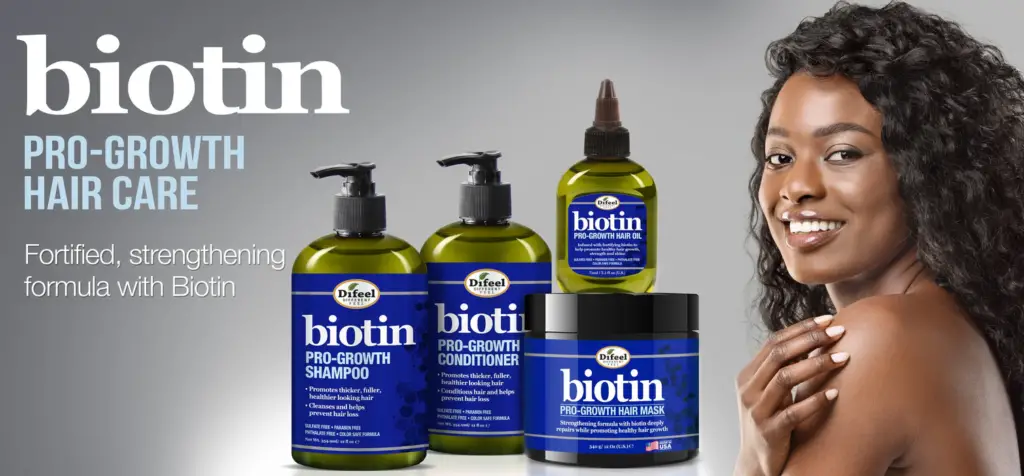
What Makes a Hair Growth Oil Actually Work for Edges
Not all hair growth oils are created equal, and when it comes to edges specifically, you need ingredients that address the unique challenges of this delicate area. Let me break down what actually works—and what’s just expensive marketing hype.
First, understand that edge hair follicles are naturally finer and more sensitive than the rest of your scalp. They need gentle but effective stimulation, not harsh treatments that can cause further damage. The best hair growth oils for edges work through multiple mechanisms: improving blood circulation, providing essential nutrients to follicles, and creating optimal conditions for new growth.
Castor oil deserves special mention because it’s been a game-changer for so many people, and it’s incredibly affordable. The ricinoleic acid in castor oil has natural anti-inflammatory properties and helps improve circulation to hair follicles. But here’s the thing—not all castor oil is the same. Cold-pressed, hexane-free castor oil retains more of the beneficial compounds that actually support hair growth.
Rosemary oil has solid scientific backing for hair growth. Studies show it can be as effective as minoxidil (the active ingredient in Rogaine) for certain types of hair loss, but it’s gentler and more affordable. The key is using it properly diluted—pure rosemary oil can actually irritate the delicate edge area.
Peppermint oil creates that tingling sensation that indicates increased blood flow to follicles. The menthol naturally stimulates circulation, which helps deliver nutrients to hair roots. Again, proper dilution is crucial for edge application.
Jojoba oil isn’t technically an oil—it’s a wax ester that closely mimics your scalp’s natural sebum. This makes it perfect for edges because it doesn’t clog follicles but still provides deep nourishment. It’s also lightweight enough that it won’t weigh down fine edge hairs as they start to regrow.
Coconut oil, particularly virgin coconut oil, penetrates the hair shaft better than most oils due to its unique molecular structure. For edges, this means better nourishment of existing hair and protection against breakage during the vulnerable regrowth phase.
The carrier oil matters just as much as the active ingredients. Lightweight oils like sweet almond, grapeseed, or fractionated coconut oil make excellent bases for hair growth blends because they don’t leave heavy residues that can interfere with styling or daily activities.
What doesn’t work? Expensive oils with exotic names but no proven benefits, products with alcohol-based formulations that dry out the scalp, and anything with harsh fragrances or preservatives that can irritate the sensitive edge area.
The most effective hair growth oils for edges combine proven active ingredients in the right proportions, use quality carrier oils, and are formulated specifically for the delicate hairline area rather than general scalp treatment.
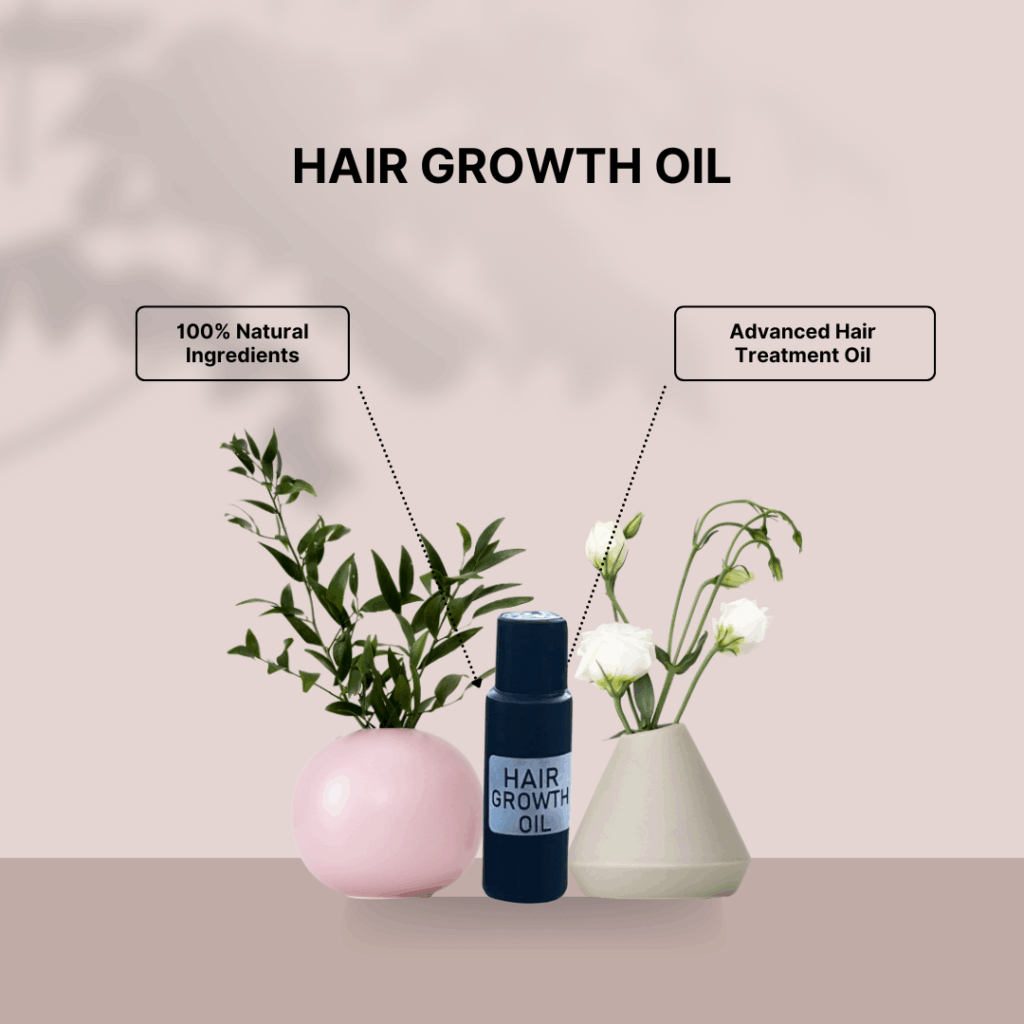
Top Affordable Hair Growth Oils Available in Cape Town
Let’s get practical and talk about specific products you can actually find and afford here in Cape Town. After working with hundreds of customers dealing with edge thinning, certain oils consistently deliver results without breaking the bank.
Pure castor oil remains one of the most effective and affordable options available locally. You can find quality cold-pressed castor oil at most health stores, pharmacies, and even some supermarkets throughout Cape Town for under R50 per bottle. The key is looking for hexane-free, cold-pressed varieties—brands like Faithful to Nature or local health store brands often stock these.
For those wanting ready-made blends, several local companies have created excellent formulations specifically for hair growth. These typically combine castor oil with growth-stimulating essential oils like rosemary and peppermint, properly diluted for edge application. Expect to pay R80-150 for quality blends, which is still significantly less than imported premium brands.
DIY blending gives you the most control and often the best value. A basic edge growth oil combining castor oil, sweet almond oil, rosemary essential oil, and peppermint essential oil can be made for under R100 and will last months with proper storage. Many Cape Town health stores sell essential oils individually, making custom blending affordable and accessible.
International brands available locally through retailers like Clicks, Dis-Chem, or online platforms often provide good middle-ground options. Look for brands that list their ingredients clearly and focus on proven hair growth compounds rather than exotic marketing claims.
What’s particularly exciting is the growing number of local South African companies creating hair growth products specifically for our climate and hair types. These often understand the challenges of Cape Town’s environment and formulate accordingly, plus supporting local business keeps costs reasonable.
When evaluating affordable options, focus on the ingredient list rather than packaging or marketing promises. A simple, well-formulated oil with proven ingredients will outperform an expensive product with fancy packaging but questionable components.
Consider starting with single oils to test your skin’s sensitivity before investing in blends. Castor oil alone, properly applied, has helped countless people see edge improvement. You can always add other oils later as you learn what works best for your specific situation.
The most important factor isn’t finding the single “best” oil—it’s finding an affordable option you’ll actually use consistently. The most expensive oil in the world won’t help if it sits unused because you’re worried about running out or can’t afford to repurchase.
At Haircare Shop, we’ve carefully selected hair growth oils that balance effectiveness with affordability, understanding that consistent use is more important than premium pricing.

How to Choose the Right Hair Growth Oil for Your Edge Type
Your edges are as individual as you are, and choosing the right hair growth oil depends on understanding your specific situation rather than following generic advice. Let me help you figure out what will work best for your particular edge challenges.
First, assess your current edge condition honestly. Are you dealing with complete hair loss in certain areas, or is it more about thinning and weakening of existing hair? Recent damage responds differently than long-term thinning, and your oil choice should reflect this.
For areas with complete hair loss where you can see scalp, you need oils that focus on follicle stimulation and circulation. Castor oil blends with rosemary or peppermint essential oils work well here because they increase blood flow to dormant follicles. The goal is waking up sleeping hair roots rather than just nourishing existing hair.
If your edges are thinning but still present, focus on strengthening and protecting what you have while encouraging new growth. Lighter oils like jojoba or sweet almond oil work better because they won’t weigh down fine, fragile edge hairs. These oils nourish without creating buildup that can make thin hair look even sparser.
Consider your hair texture and porosity. Fine, low-porosity hair needs lighter oils that won’t sit on top of the hair shaft. Coarse, high-porosity hair can handle heavier oils and often needs more intensive moisture to prevent breakage during the regrowth process.
Your scalp sensitivity matters enormously for edge application. The hairline area is more sensitive than the rest of your scalp, so if you have reactive skin or conditions like eczema or dermatitis, stick to gentler oils. Pure jojoba oil or diluted castor oil are usually well-tolerated even by sensitive scalps.
Think about your lifestyle and styling habits. If you use edge control products daily, you need an oil that plays well with your styling routine. Lighter oils absorb better and won’t interfere with product application. If you prefer low-maintenance routines, slightly heavier oils that provide longer-lasting benefits might work better.
Climate considerations are real here in Cape Town. Our windy, dry conditions can make some oils feel too heavy or attract dust and debris. Others might not provide enough protection against environmental stressors. Consider how the oil feels and performs in our specific weather conditions.
Budget and availability should influence your choice too. The best oil for you is one you can afford to use consistently and easily repurchase when needed. Don’t choose an expensive imported oil if it means you’ll use it sparingly or can’t maintain regular application.
Your patience level and expectations matter. Some oils show results faster than others, and some require more precise application techniques. Be honest about what you’ll actually stick with long-term.
Most importantly, don’t expect any single oil to solve complex edge issues immediately. The right oil for you might be a simple, affordable option used consistently rather than an expensive miracle product used occasionally.
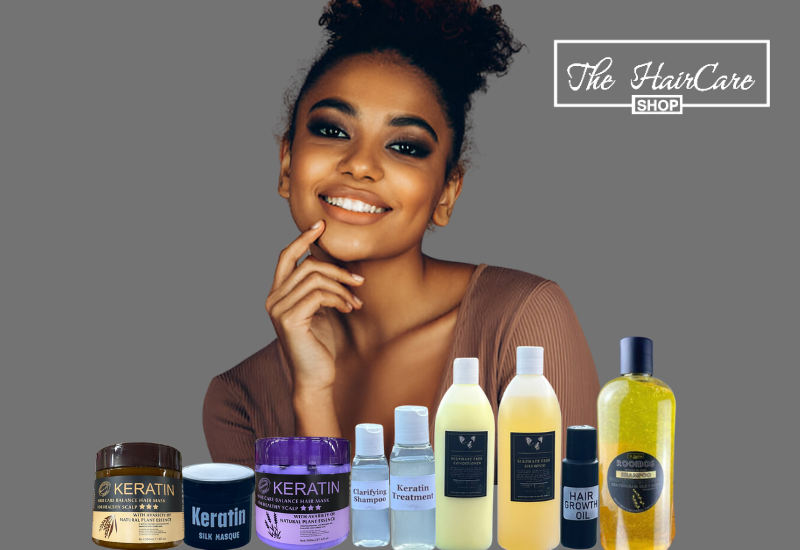
The Proper Way to Apply Hair Growth Oil to Thinning Edges
Application technique can make or break your results with hair growth oils, and the edge area requires special care that’s different from general scalp treatment. Let me walk you through the method that consistently gives the best results for thinning edges.
Start with clean edges, but not freshly washed. The best time for oil application is on second or third-day hair when your scalp has some natural oils but isn’t overly dirty. Fresh-washed scalp can be too sensitive for some oils, while very dirty scalp won’t absorb the treatment effectively.
Use the right amount—this is where most people go wrong. For edge application, less is definitely more. A few drops of oil are sufficient for your entire hairline. Too much oil can clog follicles, interfere with styling, or attract dirt and debris that can irritate the delicate edge area.
Apply oil to your fingertips first, rub them together to warm the oil slightly, then gently massage into your edges using small circular motions. Don’t rub vigorously or apply pressure—the goal is gentle stimulation, not aggressive manipulation that can damage fragile follicles.
Focus on the scalp, not the hair. While some oil on existing edge hairs is fine, the real work happens at the follicle level. Make sure you’re actually reaching the scalp with your massage, not just coating the surface hairs.
Pay attention to your massage technique. Gentle circular motions for 2-3 minutes increase blood flow without causing trauma. Some people find that using a soft-bristled toothbrush or edge brush helps distribute the oil evenly and provides gentle stimulation, but this isn’t necessary for everyone.
Timing matters. Many people get the best results applying hair growth oil to edges in the evening, allowing overnight absorption without interference from styling products or environmental factors. However, if evening application interferes with your pillowcase or sleep comfort, morning application works too—just allow time for absorption before styling.
Don’t wash the oil out immediately. Hair growth oils need time to penetrate and work. Leave the oil on for at least several hours, preferably overnight. If you must style your hair shortly after application, use minimal oil and focus on scalp contact rather than hair coverage.
Frequency depends on your oil choice and scalp sensitivity. Heavy oils like castor oil might be best used 2-3 times per week, while lighter oils can often be used daily. Start with less frequent application and increase gradually based on how your scalp responds.
Protect your pillowcase if doing overnight treatments. A silk or satin pillowcase helps prevent oil transfer and is gentler on edges anyway, but you might also want to use an old pillowcase or place a towel over your pillow during treatment periods.
Track your application routine. Many people start enthusiastically but become inconsistent over time. Note when you apply oil, which products you use, and any changes you observe. This helps you identify what’s working and maintain effective habits.
Creating Your Edge Recovery Routine That Actually Fits Your Life
The best hair growth routine is the one you’ll actually follow, not the most complicated or expensive one you’ve read about online. Let’s build an edge recovery routine that works with your real life in Cape Town, not against it.
Start with your current schedule and build around it. If you’re not a morning person, don’t plan complicated edge routines for before work. If evenings are chaotic with family demands, don’t set yourself up for failure with time-intensive treatments. Work with your natural rhythms, not against them.
A basic routine can be incredibly effective: oil application 2-3 times per week, gentle massage for 2-3 minutes, and protective styling choices that don’t stress your edges. That’s it. Consistency with simple steps beats sporadic use of complex routines every single time.

Consider your work and social schedule. If you have important meetings or events, plan oil treatments for days when you’ll be home in the evening. Some oils can make hair look slightly different temporarily, and you want to feel confident about your appearance during important occasions.
Incorporate edge care into existing routines rather than creating separate time blocks. Apply oil while watching TV, during your skincare routine, or while waiting for other hair treatments to process. This makes it feel less like another task and more like a natural part of your self-care.
Plan for Cape Town’s unique challenges. Keep a light oil or serum in your bag for days when the wind is particularly harsh. Have a backup styling plan for when treatments make your edges look different than expected. Consider how load shedding affects your routine timing and have alternatives ready.
Make it seasonal. Your edges might need more intensive care during Cape Town’s dry winter months and lighter maintenance during humid summer periods. Adjust your routine based on environmental factors rather than sticking rigidly to one approach year-round.
Budget for consistency rather than luxury. It’s better to use an affordable oil regularly than an expensive treatment sporadically. Calculate monthly costs and choose products you can maintain long-term without financial stress.
Create accountability systems that work for you. Some people do well with phone reminders, others prefer visual cues like keeping oil bottles visible, and some benefit from tracking apps. Find what keeps you consistent without feeling overwhelming.
Plan for setbacks and life interruptions. You’ll have weeks when the routine falls apart—traveling, illness, work deadlines, family crises. Have a simplified version of your routine for these times rather than abandoning it entirely.
Most importantly, adjust based on results and life changes. What works in winter might not work in summer. What fits your routine as a student might not work when you start a new job. Be flexible and willing to modify your approach while maintaining the core principle of consistent, gentle care.
Remember, your edges didn’t thin overnight, and they won’t recover overnight. But with a realistic routine that fits your actual life, you can create the conditions for steady, sustainable improvement over time.
What to Expect: Realistic Timelines for Edge Regrowth
Let’s have an honest conversation about timelines, because managing expectations appropriately is crucial for staying motivated during your edge recovery journey. I’ve seen too many people give up just before they would have started seeing real results.
Week 1-2: The Foundation Phase Don’t expect visible changes yet—your focus should be establishing consistent application habits and monitoring how your scalp responds to the oil. Some people notice their edges feeling slightly softer or more moisturized, but this isn’t regrowth yet. Use this time to refine your routine and ensure you’re not experiencing any sensitivity or irritation.
Week 3-6: Early Changes This is when many people start noticing subtle improvements. Existing edge hairs often appear healthier, stronger, and less prone to breaking. You might see less hair coming out when you touch or style your edges. Some people notice a slight increase in texture or thickness of existing hairs during this period.
Week 6-12: Visible Progress New growth typically becomes noticeable during this timeframe for people who respond well to treatment. Look for tiny, fine hairs appearing in previously sparse areas, or existing thin hairs becoming more substantial. Progress might be uneven—some areas often respond faster than others.
Month 3-6: Significant Improvement This is usually when the most dramatic changes occur for people who are going to see substantial improvement. New growth becomes more established, and the overall appearance of your edges improves noticeably. You might find yourself needing to trim or shape your edges for the first time in years.
Month 6-12: Maturation and Maintenance Continued improvement often happens, but at a slower pace. New growth becomes stronger and more established, and you’ll have a better sense of your maximum potential for edge recovery. This is also when you can assess whether additional interventions might be helpful.
Important factors that affect timing: Age plays a significant role—younger follicles typically respond faster than older ones. The extent of damage matters enormously—recent thinning often recovers more quickly than long-term hair loss. Overall health, stress levels, nutrition, and hormone balance all influence regrowth speed.
Some people see dramatic results within 6-8 weeks, while others need 6-12 months for significant improvement. Both timelines are completely normal and don’t reflect anything about your dedication or the quality of products you’re using.
Not everyone will achieve complete regrowth. Some follicles may be permanently damaged, particularly if chemical or heat damage was severe. However, most people see meaningful improvement that makes them feel more confident about their hairline appearance.
The key is focusing on overall improvement rather than expecting perfect regrowth. Stronger existing hairs, reduced breakage, and some new growth can dramatically improve your edge appearance even if you don’t achieve the exact hairline you had at 18.
Patience during this process isn’t just about waiting—it’s about maintaining consistent care while your hair follicles do the slow work of recovery and regeneration.

Budget-Friendly Tips for Maximizing Your Hair Growth Oil Results
Getting the most value from your hair growth oil investment isn’t just about finding cheap products—it’s about using them strategically to maximize results while minimizing waste and expense. Here are the practical tips that can double or triple your effectiveness without doubling your costs.
Make your oils last longer through proper storage and application techniques. Store oils in cool, dark places to prevent rancidity and maintain potency. Use dropper bottles or applicator tips to control portions—most people use 2-3 times more oil than necessary. A 50ml bottle of quality hair growth oil should last 2-3 months with proper application.
Create your own blends to customize effectiveness while controlling costs. A base of affordable castor oil (R30-50) mixed with a few drops of rosemary essential oil (R40-60) creates an effective edge treatment for under R100 that will last months. This often works better than expensive pre-made blends because you can adjust ratios based on your hair’s response.
Use heat to boost penetration without expensive heat tools. After applying oil, gently massage with fingertips to create natural warmth, or place a warm (not hot) damp towel over your edges for 10-15 minutes. This increases absorption and effectiveness without requiring special equipment.
Combine oil treatments with free or low-cost complementary practices. Gentle scalp massage, protective styling choices, and reducing harsh edge manipulation all amplify your oil’s effectiveness without additional product costs. These lifestyle changes often contribute as much to edge recovery as the oils themselves.
Time your applications strategically to reduce waste. Applying oil before activities that will require immediate washing (like swimming or intense workouts) wastes product. Plan treatments for times when your hair can remain undisturbed for several hours.
Buy in appropriate quantities based on your testing results. Don’t invest in large quantities until you’ve confirmed an oil works for your hair. However, once you find effective products, buying larger sizes often provides significant per-milliliter savings.
Share costs with friends or family members who have similar hair concerns. Many hair growth oils come in sizes suitable for splitting, and buying together often qualifies for bulk discounts or free shipping thresholds.
Track your usage and results to avoid expensive trial-and-error cycles. Note which oils work, how much you use, and how often you need to repurchase. This prevents repeatedly buying ineffective products and helps you budget accurately for successful routines.
Look for multi-purpose oils that serve several hair care needs. Quality jojoba or sweet almond oil can work for edge treatment, general hair moisturizing, and even skin care, providing better overall value than single-purpose products.
Take advantage of local resources and seasonal sales. Many Cape Town health stores offer bulk buying options or periodic sales on natural oils. Building relationships with local suppliers can lead to better prices and notification about special offers.
Most importantly, remember that consistency with affordable products typically produces better results than sporadic use of expensive treatments. Your edges will respond better to regular care with a R50 oil than occasional treatments with a R300 premium product.
Common Edge Care Mistakes That Make Thinning Worse
After years of helping people recover their edges, I’ve seen the same mistakes repeated over and over—often by people who are genuinely trying to help their hair but unknowingly making the problem worse. Let’s talk about these pitfalls so you can avoid them.
Over-manipulation is probably the biggest edge killer I see. People become so focused on their thinning edges that they constantly touch, examine, and fuss with the area. Every time you run your fingers along your hairline, tug at sparse hairs, or repeatedly style and restyle your edges, you’re creating micro-damage that accumulates over time.
Using too much product is another major culprit. More oil doesn’t equal faster results—it often equals clogged follicles, attraction of dirt and debris, and interference with your hair’s natural balance. I’ve seen people literally suffocate their edge follicles with heavy products applied too frequently.

Aggressive brushing or edge styling causes immediate and cumulative damage. Those hard bristle brushes, metal-toothed combs, and forceful smoothing techniques that promise sleek edges are often destroying the very hair you’re trying to preserve. The edge area can’t handle the same manipulation as the rest of your hair.
Mixing too many active ingredients without understanding interactions can irritate your scalp or reduce effectiveness. Combining multiple growth serums, essential oils, and treatments might seem like it would accelerate results, but it often causes sensitivity reactions that set back your progress.
Inconsistent application patterns confuse your follicles and make it impossible to assess what’s actually working. Using different products constantly, changing application frequency randomly, or stopping and starting treatments repeatedly prevents you from building the sustained conditions your edges need for recovery.
Ignoring your overall hair health while focusing only on edges is like trying to grow a garden in poor soil. If you’re using harsh shampoos, tight styling, or damaging techniques on the rest of your hair, the stress and inflammation affect your entire scalp, including your edge area.
Setting unrealistic expectations and giving up too quickly wastes time and money while allowing further damage to occur. Hair growth is slow, and edge recovery can be even slower. People who expect dramatic results in 2-4 weeks often abandon effective treatments just before they would start seeing improvement.
Using products with alcohol, sulfates, or harsh preservatives directly on the delicate edge area can cause inflammation and irritation that actually inhibits hair growth. Many edge control products and styling gels contain ingredients that provide immediate cosmetic benefits but long-term damage.
Neglecting to protect edges from environmental damage while treating them is counterproductive. You can’t apply growth oil and then expose your edges to harsh sun, constant wind, or chemical styling products and expect optimal results.
The most expensive mistake? Jumping to costly treatments or procedures before trying consistent, gentle care with affordable products. Many people spend hundreds or thousands of rands on professional treatments that don’t address the daily habits and environmental factors that caused their edge thinning in the first place.
Remember, your edges are the most delicate part of your hairline. They need gentle, consistent care—not aggressive intervention or complicated routines that are impossible to maintain long-term.
Frequently Asked Questions About Hair Growth Oils for Edges
How long should I use a hair growth oil before I can tell if it’s working?
Give any hair growth oil at least 6-8 weeks of consistent use before making a decision about effectiveness. Hair grows slowly—only about 1cm per month under ideal conditions—and edges often grow even more slowly due to their delicate nature. However, you should notice improvements in hair strength and reduced breakage within 3-4 weeks if the product is working for you.
Can I use hair growth oil on my edges if I have a sensitive scalp?
Yes, but choose your oils carefully and test first. Patch test any new oil on a small area of skin before applying to your edges. Stick to gentler oils like jojoba, sweet almond, or well-diluted castor oil. Avoid products with strong essential oils, fragrances, or preservatives if you have sensitive skin. If you experience any irritation, discontinue use immediately.
Is it safe to use hair growth oil on edges while pregnant or breastfeeding?
Most carrier oils like castor, jojoba, and coconut oil are generally safe during pregnancy and breastfeeding, but avoid essential oils unless approved by your healthcare provider. Some essential oils like rosemary and peppermint aren’t recommended during pregnancy. Always consult your doctor before starting any new hair care treatments during pregnancy or while nursing.
Will hair growth oil make my edges look greasy or interfere with my styling?
Proper application shouldn’t interfere with styling. Use small amounts, focus on scalp contact rather than hair coating, and allow adequate absorption time before styling. If you find oil interferes with your preferred styles, try applying at night for overnight treatment, or switch to a lighter oil like jojoba or fractionated coconut oil.
Can I use hair growth oil with other edge products like edge control or gel?
Yes, but timing and layering matter. Apply hair growth oil to clean scalp, allow it to absorb, then apply styling products if needed. Avoid mixing oil directly with styling products, as this can reduce effectiveness of both. Consider alternating between treatment days (oil only) and styling days (minimal oil plus styling products).
What’s the difference between expensive and affordable hair growth oils?
Often, not much in terms of actual effectiveness. Expensive oils might have fancier packaging, exotic ingredients, or premium marketing, but the most effective ingredients (castor oil, rosemary oil, jojoba oil) are naturally affordable. Focus on ingredient quality and purity rather than price point. A well-formulated affordable oil often outperforms expensive products with questionable ingredients.
Can men use the same hair growth oils for their hairline as women?
Absolutely. Hair growth oils work the same way regardless of gender. Men dealing with receding hairlines or edge thinning can use the same products and application techniques. The main difference might be styling preferences—men might prefer lighter oils that don’t interfere with shorter haircuts or daily grooming routines.
Should I stop using hair growth oil once my edges start improving?
No, consistency is key for maintaining results. Once you see improvement, you can often reduce frequency (from daily to 2-3 times per week), but stopping completely often leads to gradual regression. Think of it like moisturizing your face—ongoing maintenance keeps your results stable and can prevent future thinning.
Can I make my own hair growth oil blend at home?
Yes, and it’s often more cost-effective than buying pre-made blends. Start with a carrier oil like castor or jojoba, add a few drops of essential oils like rosemary or peppermint (properly diluted), and test the blend before making large quantities. Store homem
Your Edges Can Come Back Stronger
If there’s one thing I want you to take away from this, it’s this: thinning edges are not the end of your story. They’re simply a chapter that you can rewrite with patience, consistency, and the right approach.
We’ve covered why edge loss happens, the emotional and financial toll it can take, and—most importantly—the fact that recovery is possible without draining your bank account. Affordable hair growth oils, when chosen wisely and applied consistently, have helped countless women and men in Cape Town see real, visible improvement in just a few months.
But oils alone won’t do the work—you will. Your results will come from building a routine that fits your lifestyle, avoiding the common mistakes that slow progress, and giving your follicles the time they need to heal and regrow. Some days the changes will feel invisible, but trust me: every drop of oil, every gentle massage, every consistent choice is building towards stronger, fuller edges.
And remember, your worth has never depended on the thickness of your hairline. Regrowth is not just about beauty—it’s about confidence, self-care, and reclaiming the joy of looking in the mirror and loving what you see.
So start small, stay consistent, and give your edges the patient care they deserve. With the right affordable products and the right mindset, your edges can absolutely come back stronger—one drop at a time.


